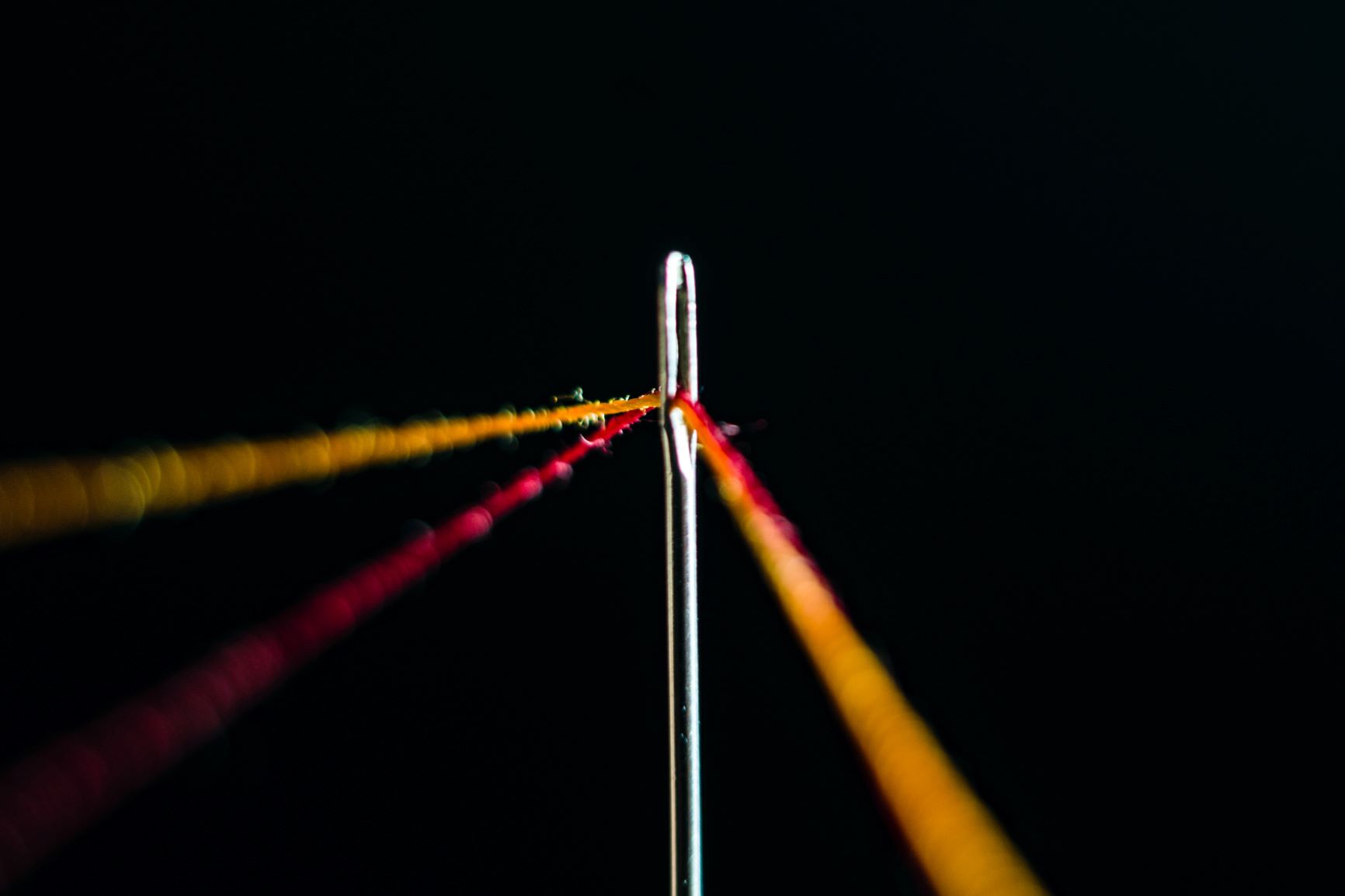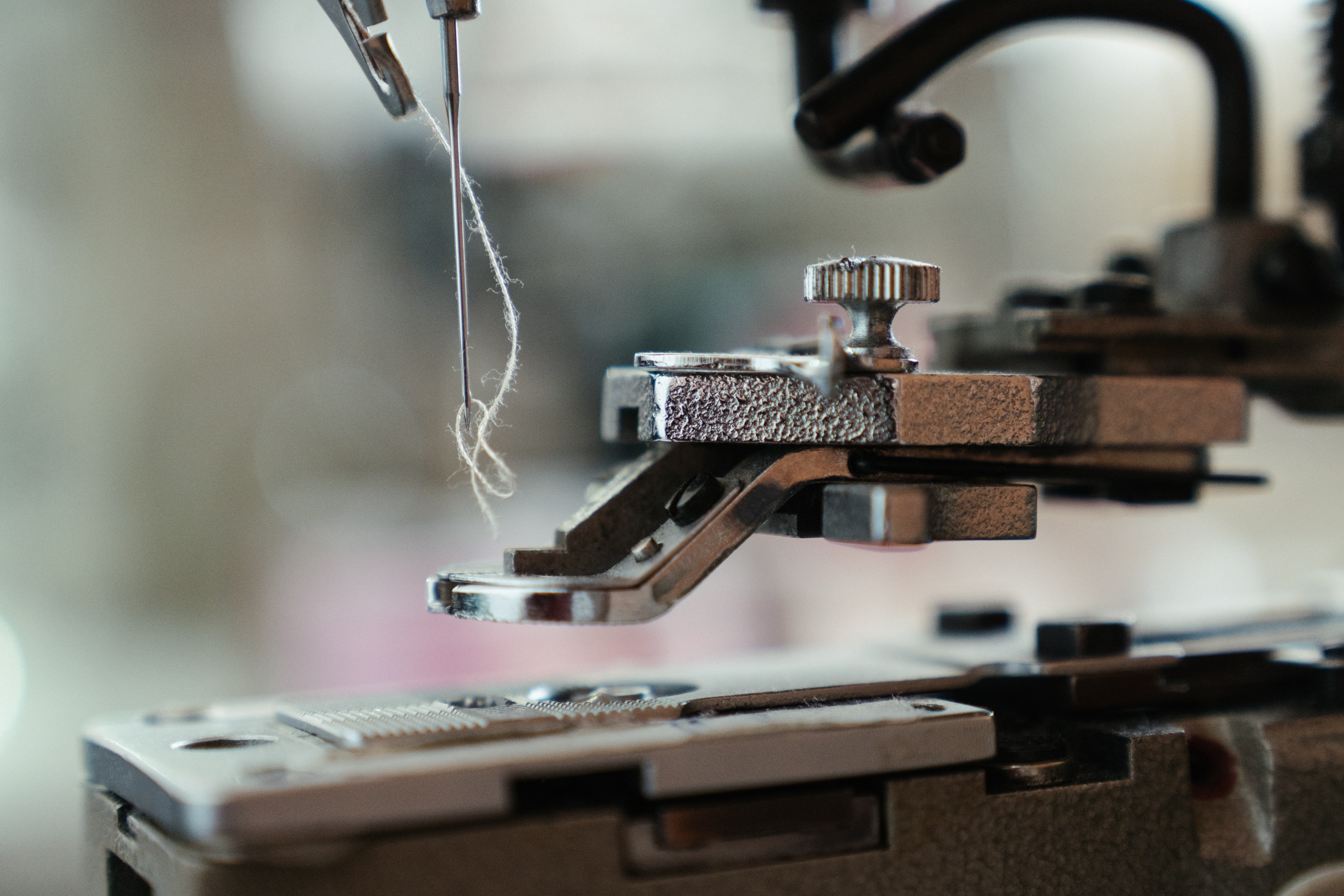Using the wrong needle for your machine, fabric, or thread can result in a substantial amount of damage. Using the wrong needle can damage your machine's timing, your fabric, shred the thread, and destroy your bobbin hook. So why isn't there a greater focus on needle handling?
Typically, needles are an afterthought because most people aren't taught the full scope of needle anatomy or the damage that can happen from choosing the wrong one. This issue probably came as a result of sewing machines only having one option for home sewing. Decades ago, home sewing machines only had one type and one size of the needle, which made choosing the right needle pointless. But a lot has changed, sewing kits have advanced, and here's what you need to know!
The shank of the needle is the top-most element that is often rounded with a flat back. The flat back is to help ensure the needle sits in the right position.
The shaft of the needle is exactly what you probably think it is. It's the longest element of the needle between the shank and the point. The thickness of the shaft is the size of the needle.

The needle's front groove is just above the needle's eye and offers a little relief for the thread and is critical for smooth stitches.
The point of the needle is what pierces through the fabric, which is pretty straight forward. But it also passed the thread through the bobbin hook, which creates the stitch, and there are many different needlepoint shapes.
The eye holds the thread, and the needle's size will determine the eye's shape and size.
The scarf is a long indentation along the needle's backside and eliminates the possibility of skipped stitches because it easily catches the loop thread.
Many of these elements you don't have to worry about so much, and often tie into one another. For example, needles with a heavier weight for denim also have a wider eye with a front groove to handle the heavy thread necessary for denim projects.
When selecting the right needle, you'll want to consider your:
But which types of needles are available? Nearly all sewing machines, except commercial machines, use the 130/705H needle system.
The system makes the needle fittings pretty universal for home sewing machines but uses letters to help indicate the needle type. For example, if you're purchasing a Singer needle pack, it might

have Q stamped on the pack's upper corner. That Q means the needles are for quilting.
In addition to the letters, there is also the weight of the needle to consider. The needle's weight often goes wrong and causes damage to the machine or even a snapped needle.
To understand the element of the needle, it's best to understand how a stitch forms in a machine:
This explains how all these elements of the needle come together to complete a stitch. A universal weight needle, size 12, can handle almost all medium-weight fabrics and medium-weight threads. It's suitable for most projects, including that majority of the time spent quilting.
When using the fabric weight to determine the needle's size, you'll want to consider the needle size to protect the fabric. The size specified refers to the shaft's diameter, and American sizes span from 8-19, while European sizes range from 60-120. The lighter the weight of the fabric, the smaller size.
Here are a few examples:
Ultimately, you'll get the best results with a needle that's right for your project. The weight of the fabric deserves the most consideration, but also your stitch and the thread. Don't attempt to use heavyweight threads with a small needle, or use long, tight stitches with a small needle. Don't forget that you should use a new needle for every project and replace it after about 12 hours of active sewing. Take care of your sewing machine by choosing the correct needle every time!
If you need a new needle, or just need to fill your sewing kit, check out our vast array of needles, fit for any sewing machine. Contact our customer service team if you would like to purchase in bulk or if you cannot find the specific product you are looking for!